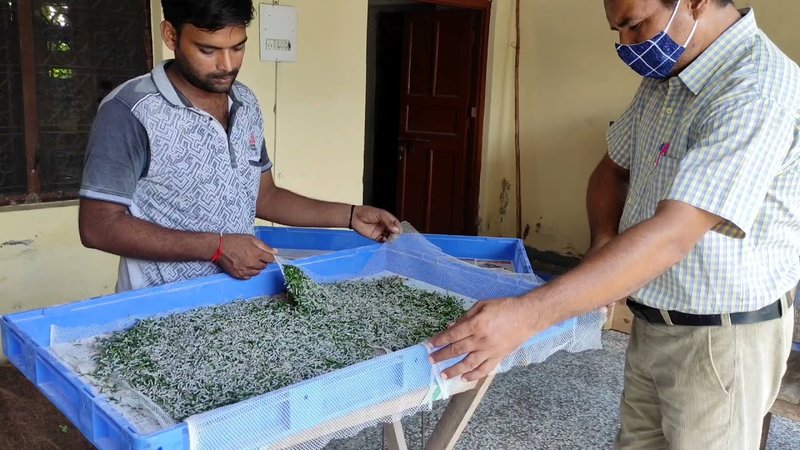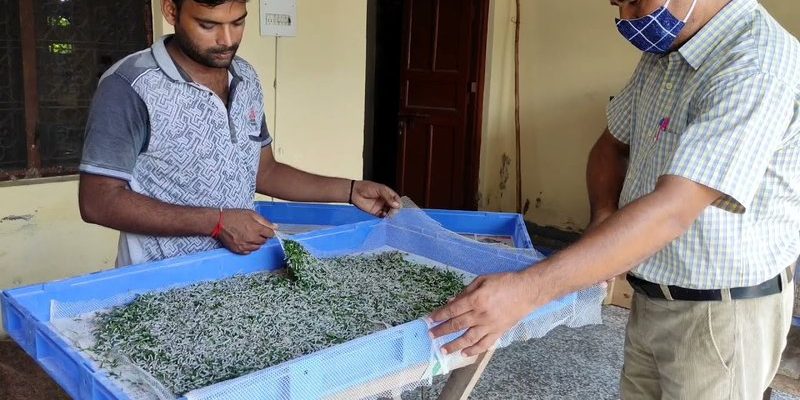
Imagine your silkworm trays as tiny ecosystems. Just as every part of an ecosystem needs to be in balance—water, food, and the right amount of sunlight—so too does your silkworm enclosure. In this guide, we’re going to explore practical steps to keep your trays and enclosures spotless. We’ll touch on the best methods, tools, and tips for maintaining a clean setup, ensuring your silkworms stay healthy and productive.
Why Cleanliness Matters for Silkworms
Keeping your silkworm trays clean is more than just a matter of aesthetics. Silkworms are sensitive creatures, and a dirty environment can lead to several health issues. Much like how we feel uncomfortable and unwell in a messy space, silkworms can suffer from stress and disease when their habitat is neglected.
A clean environment helps prevent mold and bacteria from taking root, which can cause diseases like *Nosema* or respiratory infections in silkworms. It also minimizes the risk of pests, like mites or other insects, which can harm your silkworms or disrupt their growth cycle. Regular cleaning can mean the difference between healthy, thriving worms and a slow, stressful decline.
Moreover, a clean tray makes it easier to monitor your silkworms. You can quickly spot any issues, like sick worms or an overabundance of uneaten food. Addressing these problems early on can save you time and heartache in the long run.
Tools You’ll Need for Cleaning
Before diving into the cleaning process, gather your supplies. You’ll want to be prepared, just like a chef lays out their ingredients before cooking. Here’s a short list of tools you’ll find helpful:
- Soft brush: Ideal for removing debris without harming the surface.
- Scrubbing brush: Useful for tougher dirt or stains.
- Bleach or vinegar solution: Effective disinfectants, but be cautious with the dilution.
- Dish soap: Gentle but effective for cleaning trays.
- Hot water: Helps loosen grime and kills most germs.
- Microfiber cloths: Excellent for drying and polishing your trays.
Having everything you need on hand will make the cleaning process smoother and ensure that you don’t have to take breaks to find missing items. Trust me, it’s a lot easier to get into a rhythm when you’re not running around looking for supplies.
Step-by-Step Cleaning Process
Now that you have your tools ready, let’s dive into the actual cleaning process. Think of this as your game plan—doing it step by step keeps things manageable and less overwhelming.
1. **Remove Silkworms and Food:**
Start by gently removing the silkworms from their trays. Place them in a safe container with a little food to keep them occupied while you clean. It’s like moving pets to a safe area while you tidy up their home!
2. **Empty the Trays:**
Dispose of any uneaten food and debris. A soft brush can help remove dust or leftover bits. This ensures your trays start fresh without any contamination from the old material.
3. **Clean with Soap and Water:**
Fill a basin with hot water and add a few drops of dish soap. Use a scrubbing brush to clean the trays thoroughly, paying attention to corners and crevices where dirt can hide. Rinse everything with clean water afterward.
4. **Disinfect the Trays:**
This step is crucial! Prepare a diluted bleach or vinegar solution (one part bleach to ten parts water or equal parts vinegar and water). Soak a cloth in the solution and wipe down the trays. Let them sit for a few minutes to disinfect, then rinse thoroughly to remove any cleaning solution residue.
5. **Dry and Reassemble:**
Use microfiber cloths to dry the trays completely before putting everything back together. Moisture can lead to mold, so this step is important! Once dry, you can reintroduce your silkworms and fresh food.
Following these steps ensures that your trays remain clean and safe for your silkworms, helping them thrive and grow as they should.
Common Mistakes to Avoid
Even seasoned silkworm caretakers can make mistakes during cleaning. Here are a few pitfalls to watch out for, so you don’t have to learn the hard way:
– **Skipping the Disinfection Step:** It might seem unnecessary, but skipping disinfection can lead to outbreaks of disease. Always make time for it—your silkworms will thank you!
– **Using Harsh Chemicals:** Stay away from cleaners with strong detergents or fragrances. These can be harmful to silkworms and leave residues that may affect their health.
– **Not Cleaning Regularly:** Establish a cleaning schedule based on how many silkworms you have. Regular cleaning prevents the buildup of waste and makes each session less daunting.
– **Neglecting the Environment:** Remember that silkworms need a stable environment. Avoid cleaning during extreme temperatures or drafts, as this can stress them.
Avoiding these common mistakes will make the cleaning process smoother and keep your silkworms happy and healthy.
Maintaining a Clean Environment Long-Term
Cleaning your trays and enclosures isn’t just a one-time event; it’s part of a larger routine. Here’s how to maintain a healthy, clean environment over time:
– **Daily Checks:** Spend a few minutes each day observing your silkworms and their trays. Look for any uneaten food and remove it promptly.
– **Scheduled Deep Cleans:** Plan for a full cleaning every week or two, depending on how many silkworms you’re raising. This keeps things manageable.
– **Food Management:** Use the right amount of food. Feeding too much leads to waste, attracting mold and pests, while not enough food can stress the worms.
– **Monitor Humidity and Temperature:** Keep an eye on your environment. Ideal conditions help reduce the risk of disease and make cleaning easier.
By building these habits, you’ll create a consistent routine that ensures your silkworms remain healthy and productive.
Cleaning silkworm trays and enclosures may feel tedious, but it’s a small price to pay for healthy, thriving silkworms. Just like in any other pet care routine, maintaining a clean environment leads to better overall health and happiness. By following the steps outlined here—from gathering your tools to avoiding common mistakes—you’re well on your way to creating a safe home for your silkworms.
Remember, a little effort goes a long way. With a consistent cleaning schedule and an eye for detail, you’ll be amazed at how quickly your silkworms can thrive in their spotless environment. Happy cleaning!

